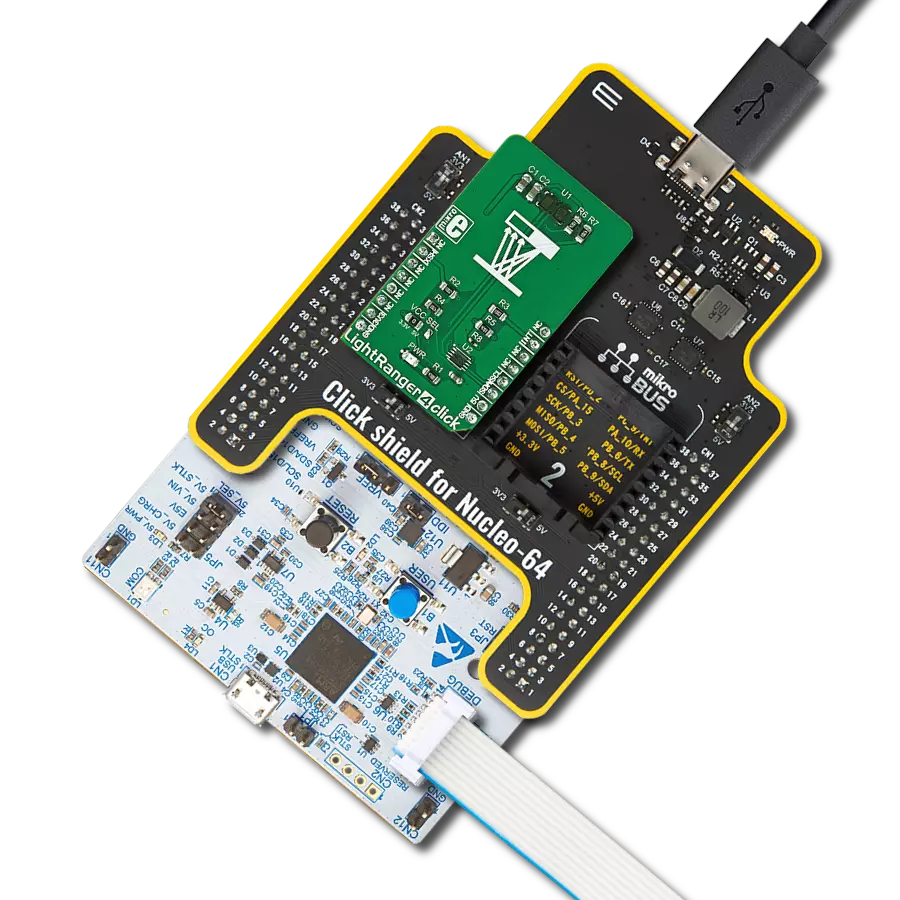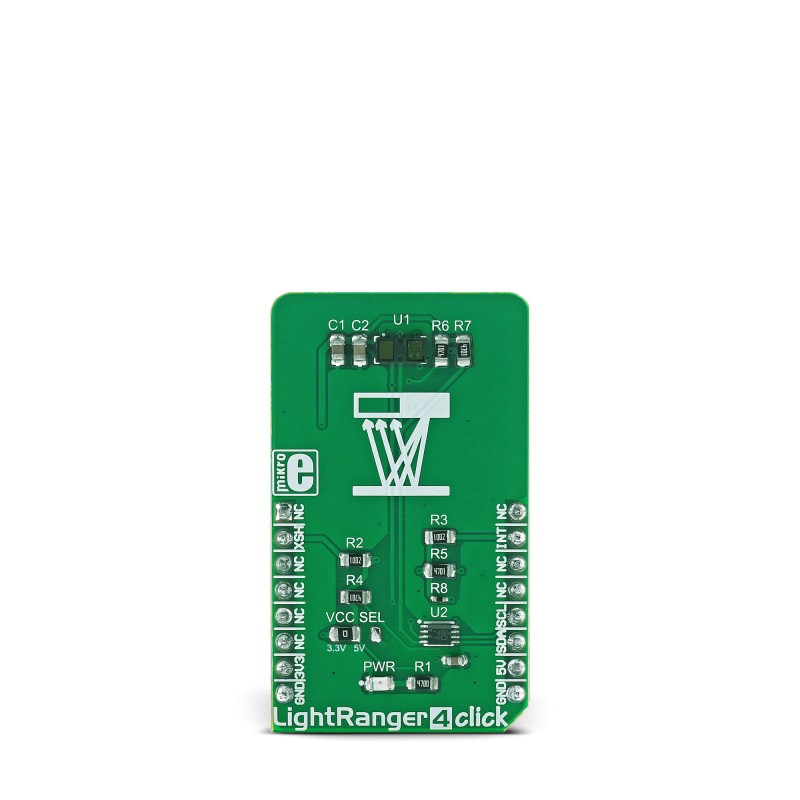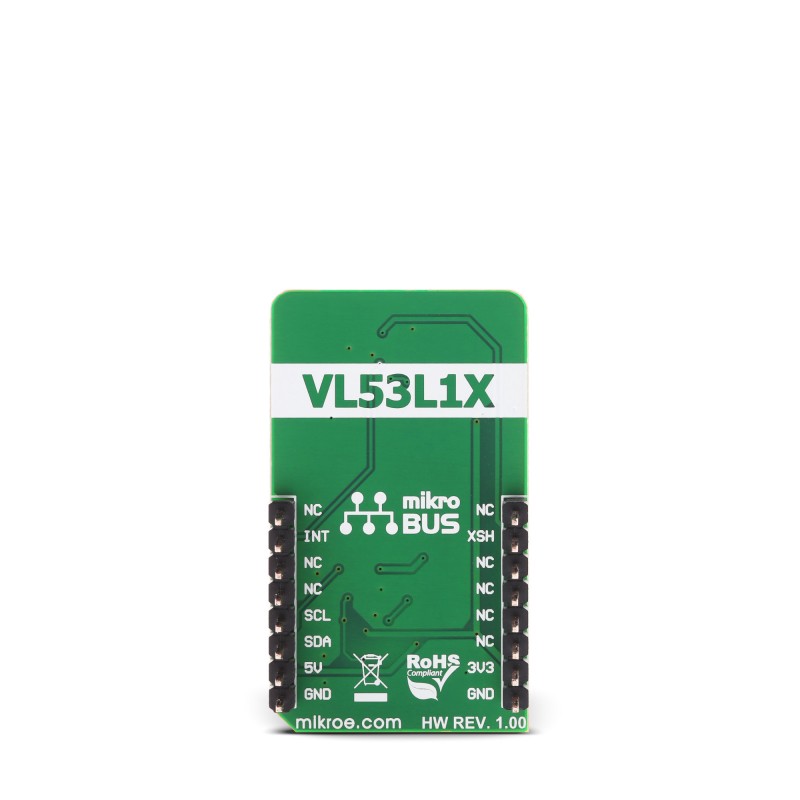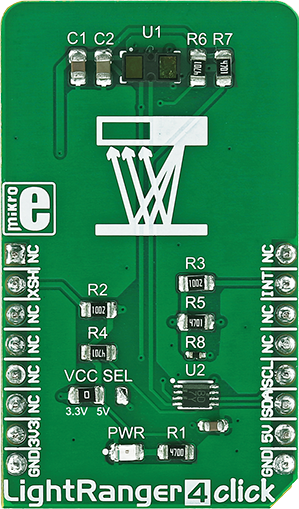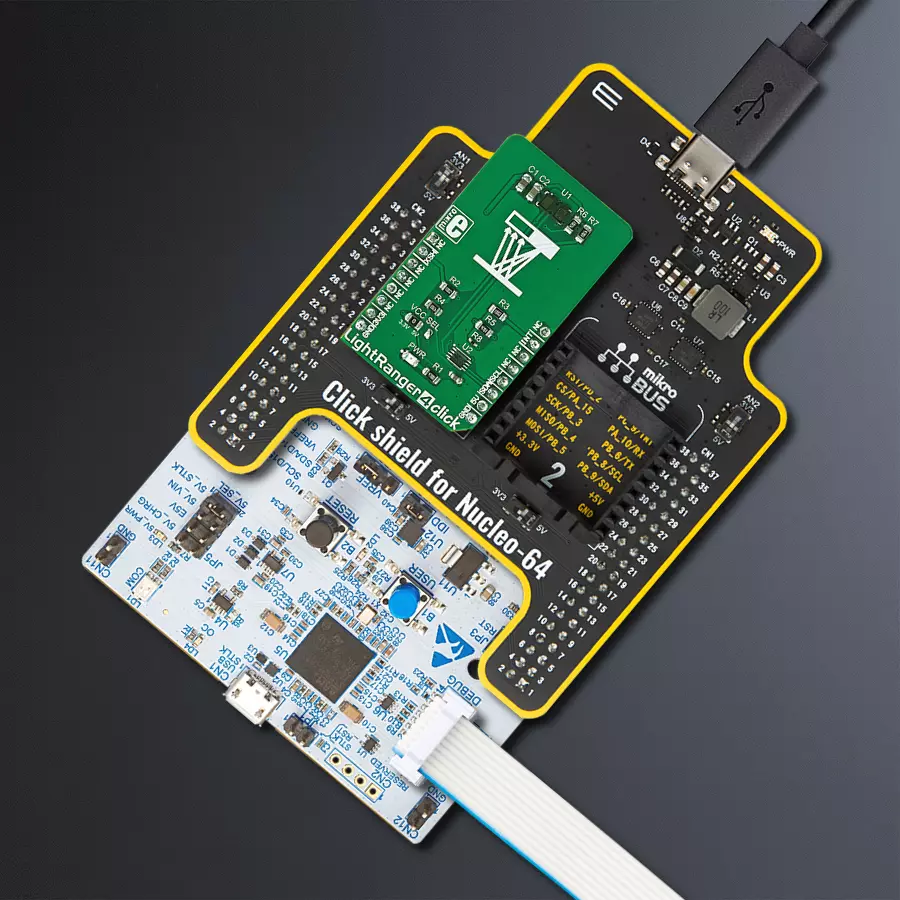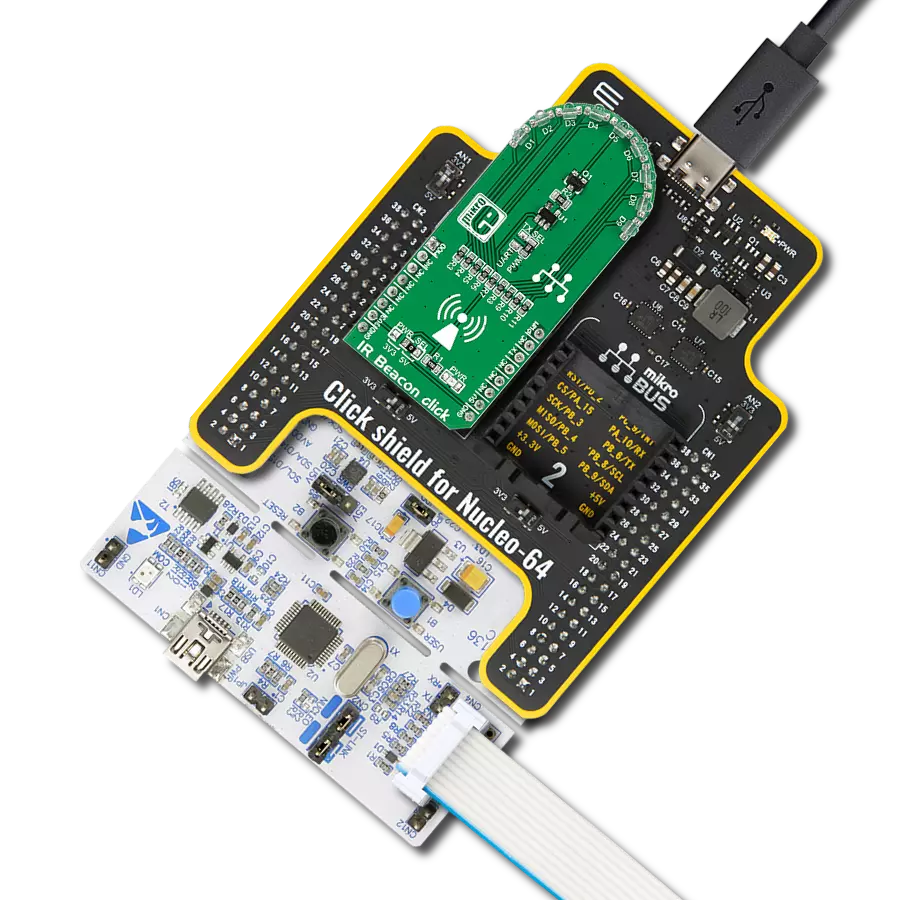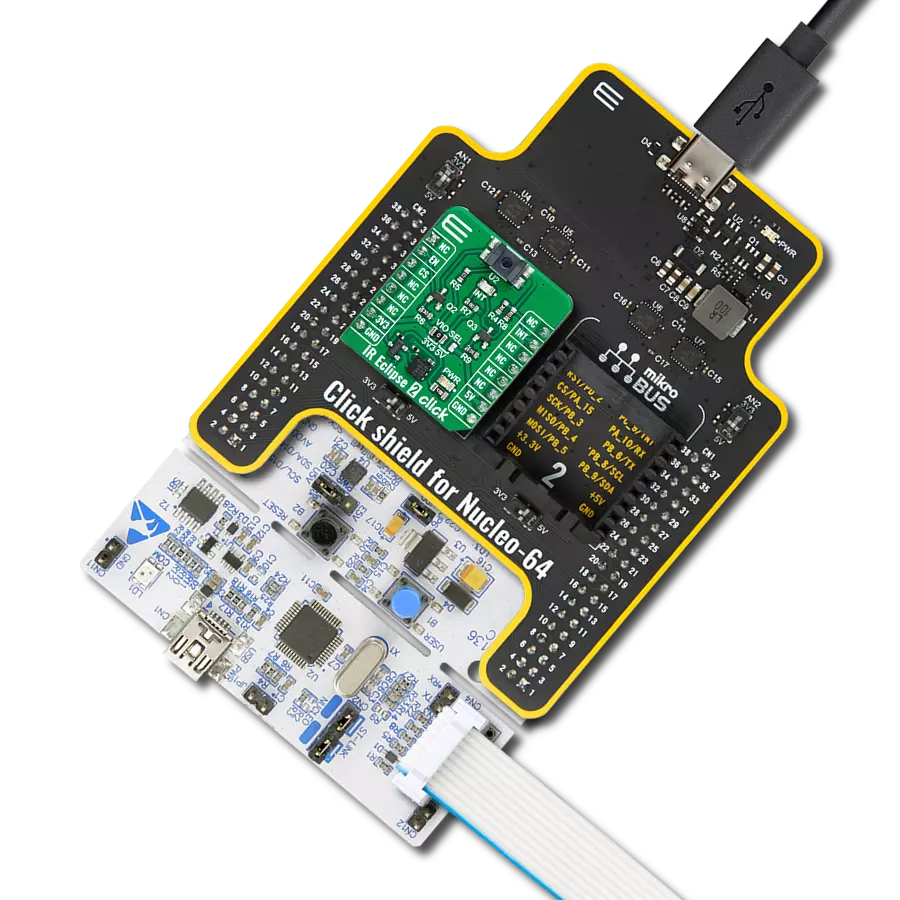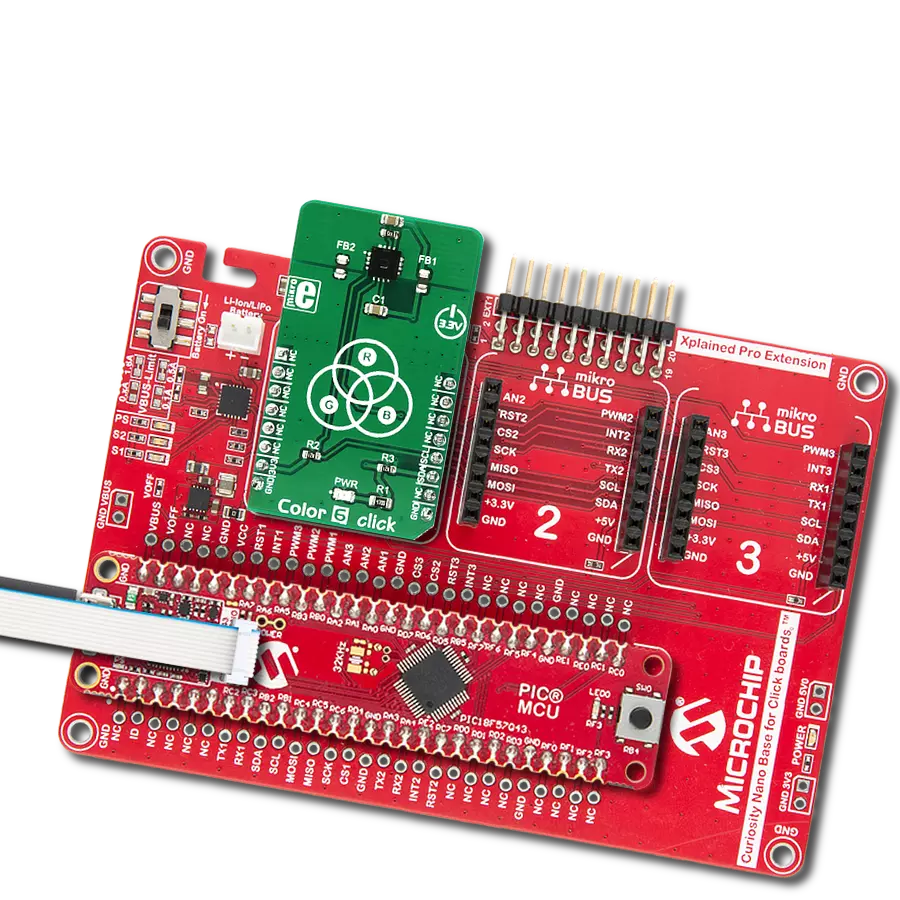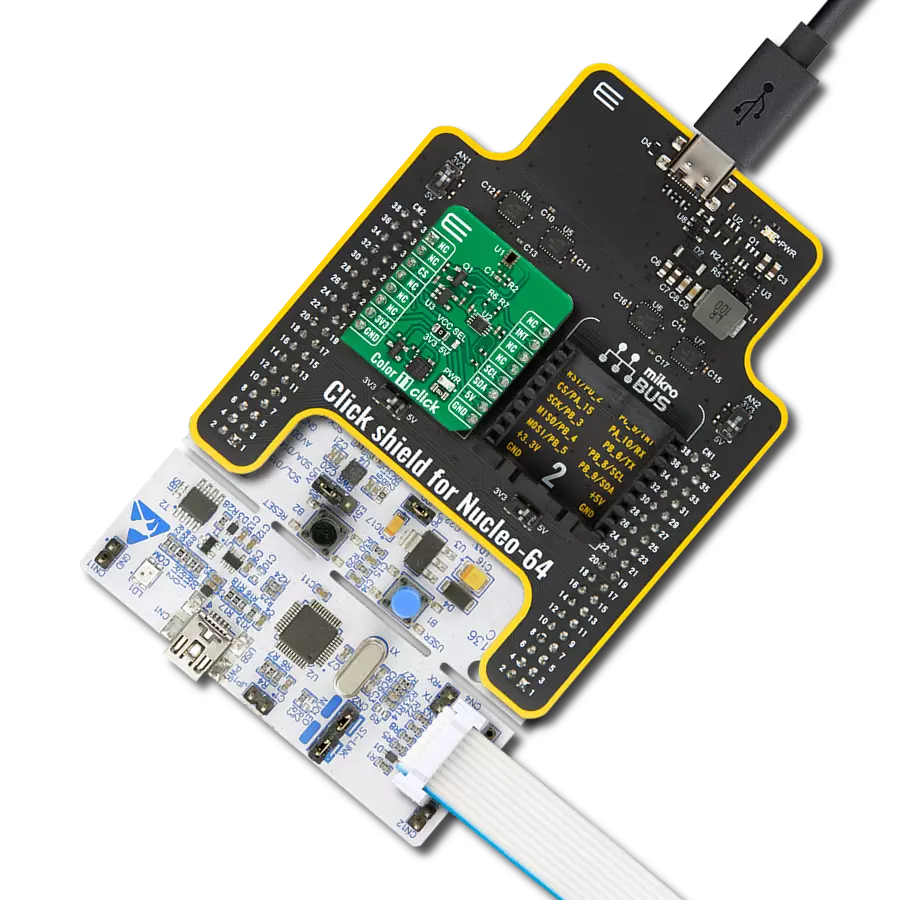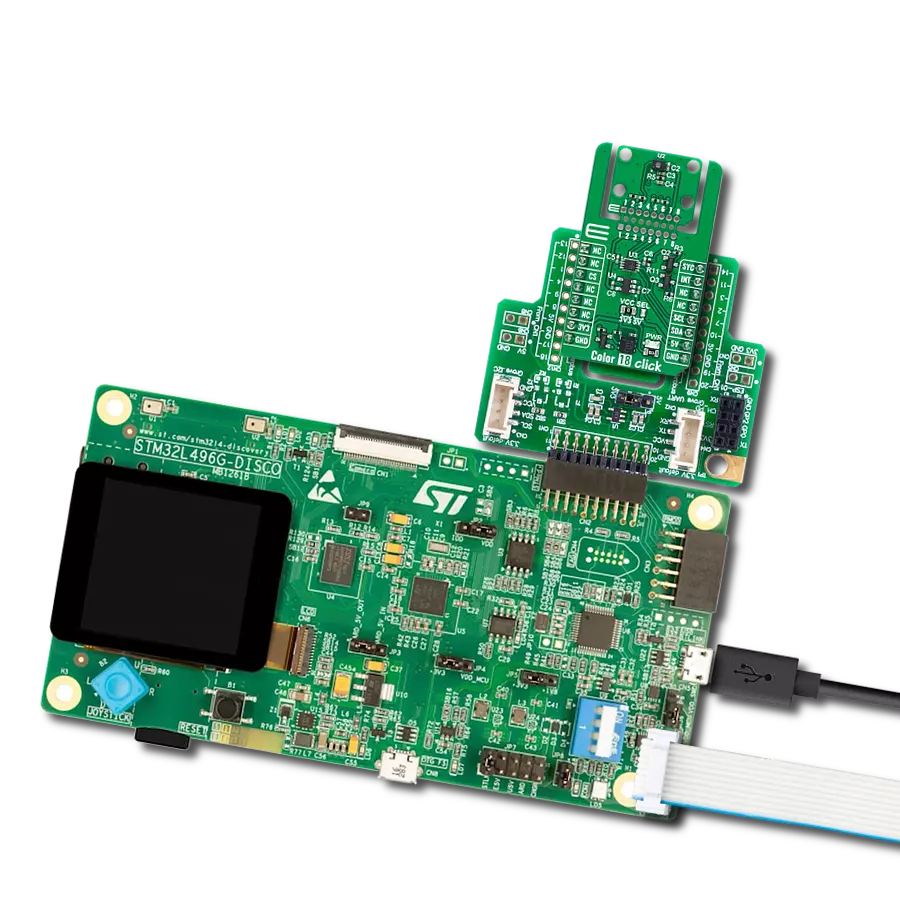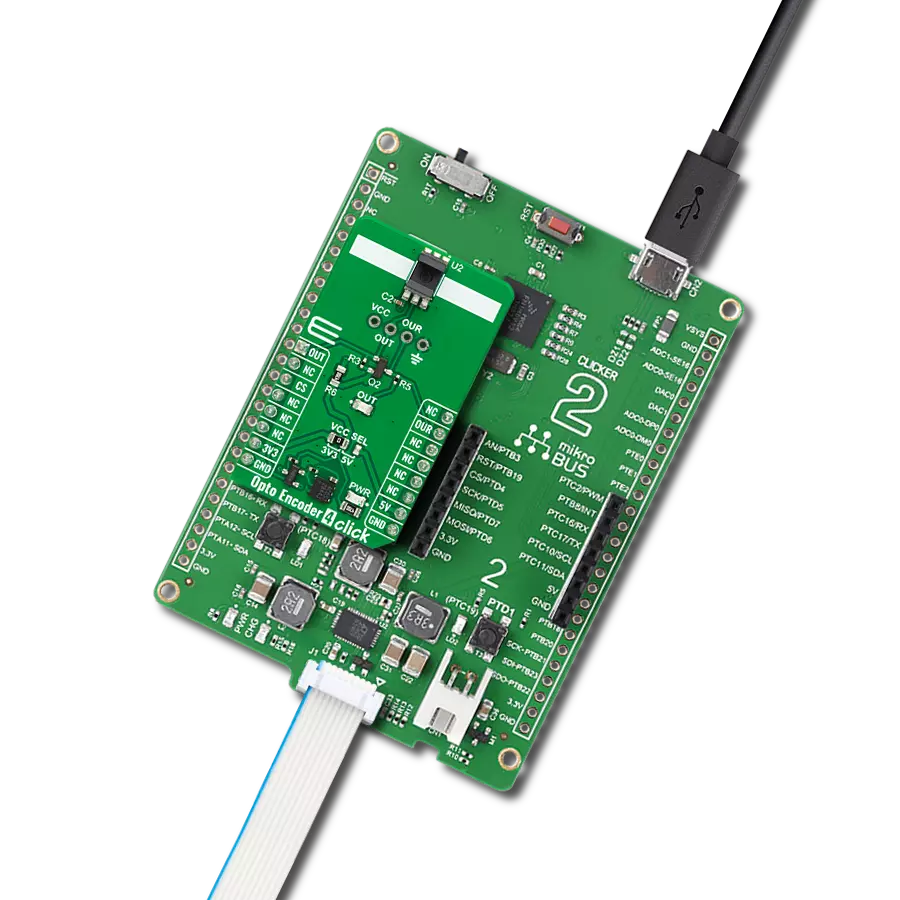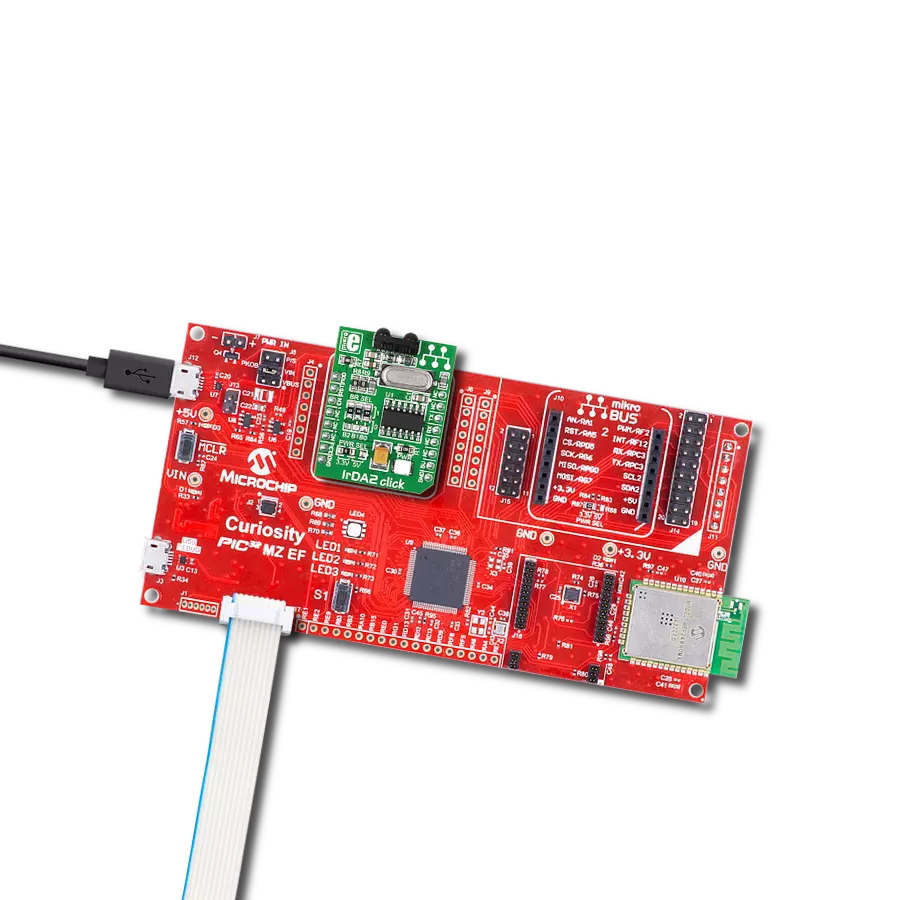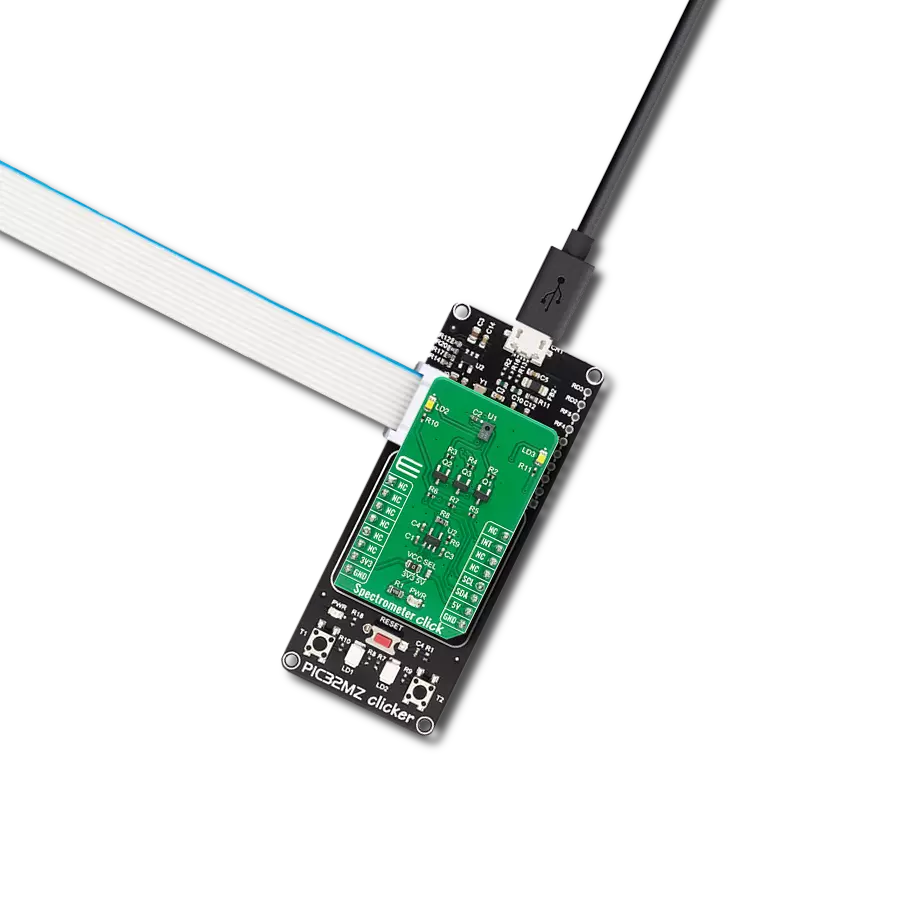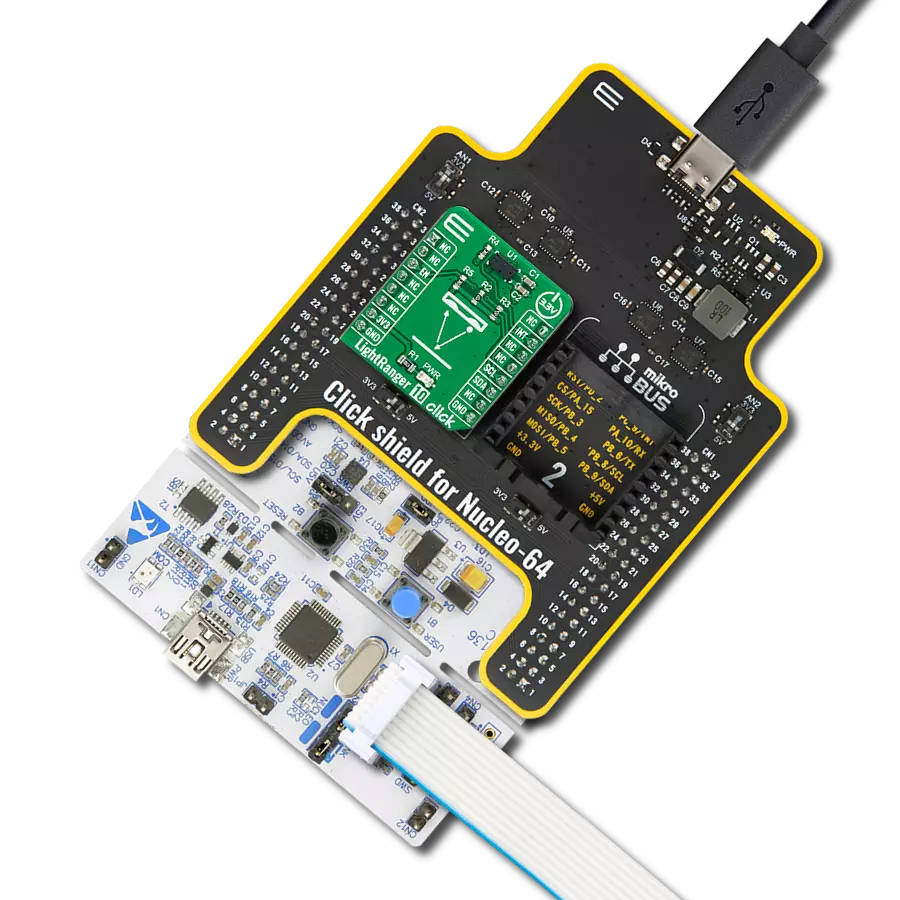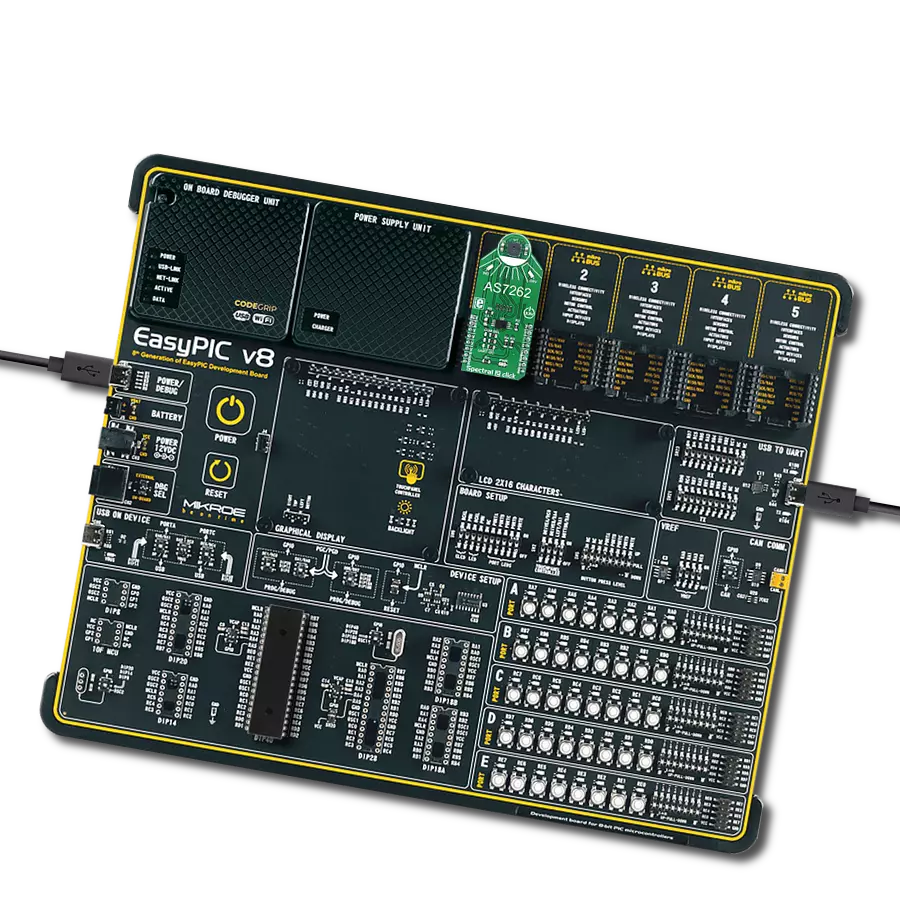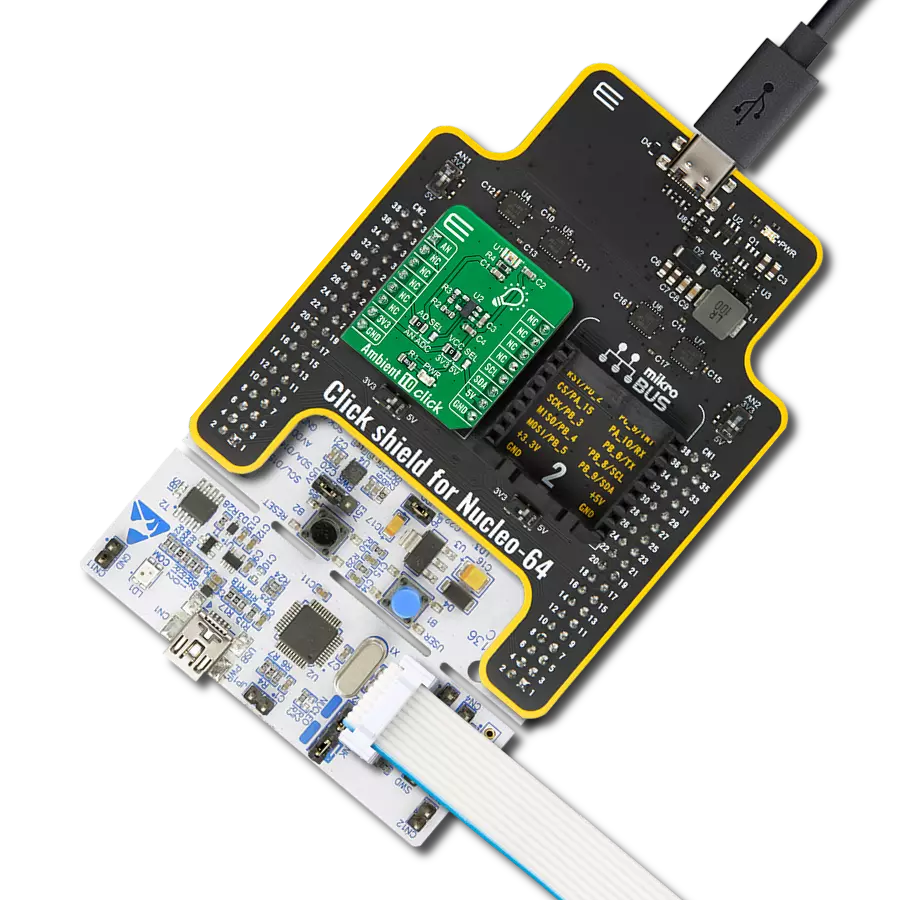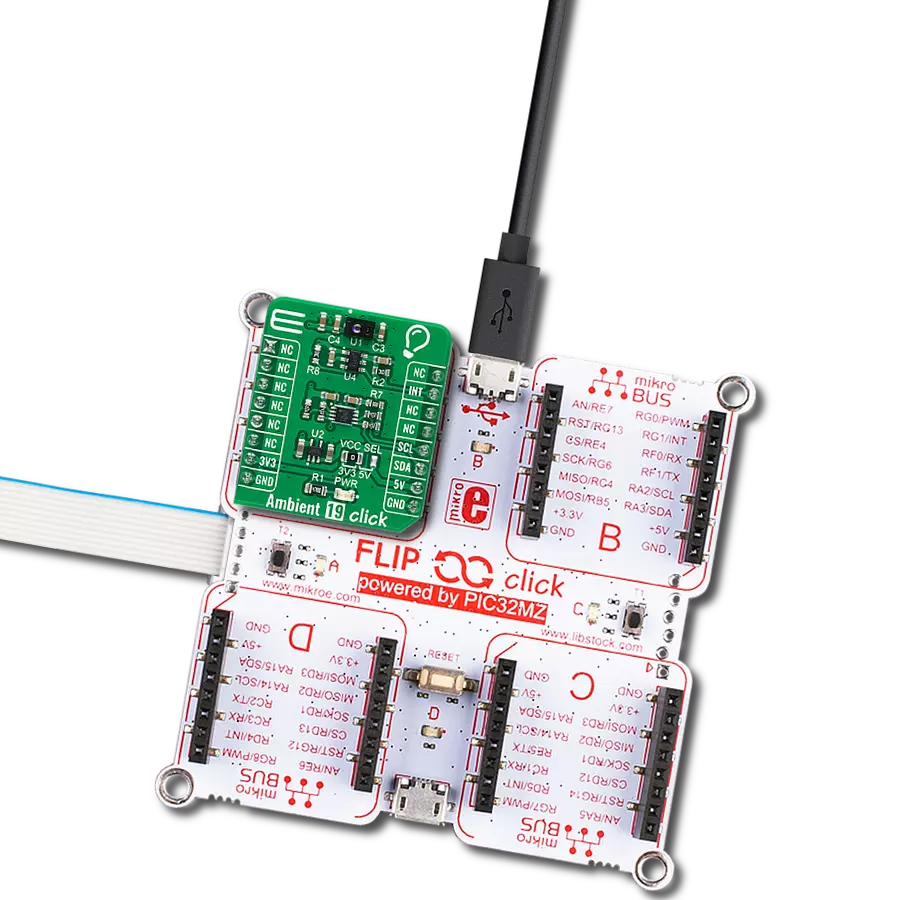Our ToF distance measurement solution paves the way for safer, more efficient systems, ensuring objects are detected, tracked, and measured with utmost accuracy
A
A
Hardware Overview
How does it work?
LightRanger 4 Click is based on the VL53L1X, a rangefinder module from STMicroelectronics. This sensor uses the Class1 laser emitter, which emits light in the range of 940 nm. The light emission is in the IR range of the spectrum and it is not visible by a human eye. It is received by the IR sensor and processed by the integrated sections of the VL53L1X, giving the result on the output register, available via the standard I2C interface. The device is rated as Class 1 LASER product, and it does not cause harmful eye injuries. However, it should not be pointed towards the eyes. The highly integrated VL53L1X ToF sensor encompasses several integrated sections. It has an embedded MCU, OTP memory, RAM area, ROM area, ranging processing unit and the VCSEL driver. It exposes a simple I2C interface for the communication with the host MCU, offering a range of registers, used for configuring and status reporting. In addition, it offers an interrupt (INT) and XSH (XSHUT) pins routed to the mikroBUS™. Highly configurable
interrupt engine allows this pin to be configured to generate interrupt signals for various events, alerting the host MCU about some important status changes, such as the Data Ready event, for example. It can be set to work in both open-drain configurations, as well as in the push-pull mode. Besides the INT pin, XSH pin is also avalible on the click board, which can be used for shuting down the main IC. The Click board™ is equipped with the 10K pull-up resistors, so it is advised to configure the INT and XSH pins in open-drain mode. The measurement is done by comparing the modulation shift of the light in the reflected beam. Therefore, the range and the accuracy depend on the material of the measured object, as well as the photo - pollution of the IR spectrum. The module is designed to suppress the noise and interference, while the programmable Field of view from 15 to 27 degrees allows focused measurement and prevents beam scattering. The measurement is naturally affected by the IR
reflectance of an object, so best results are achieved when measuring the distance of the objects that have high IR reflectance. The maximum range that can be measured is 4000mm, while the minimum operational range is 40mm. The measurement error is linear, and it grows with the distance. It stays within 10% of the distance. Since the VL53L1X ToF sensor module is highly integrated and requires a minimum number of external components to work, this Click board™ has only one SMD jumper which can be used to set the power supply voltage between 3.3V and 5V, allowing both 3.3V and 5V tolerant MCUs to be interfaced with the Click board™. The RFD77402 module datasheet offers an extensive information about internal registers and how to configure them. However, the click comes with the library of functions that provide simplified operation and measurement. The use of these functions is demonstrated in the example, which can be used as the reference for custom design.
Features overview
Development board
Nucleo-64 with STM32G474R MCU offers a cost-effective and adaptable platform for developers to explore new ideas and prototype their designs. This board harnesses the versatility of the STM32 microcontroller, enabling users to select the optimal balance of performance and power consumption for their projects. It accommodates the STM32 microcontroller in the LQFP64 package and includes essential components such as a user LED, which doubles as an ARDUINO® signal, alongside user and reset push-buttons, and a 32.768kHz crystal oscillator for precise timing operations. Designed with expansion and flexibility in mind, the Nucleo-64 board features an ARDUINO® Uno V3 expansion connector and ST morpho extension pin
headers, granting complete access to the STM32's I/Os for comprehensive project integration. Power supply options are adaptable, supporting ST-LINK USB VBUS or external power sources, ensuring adaptability in various development environments. The board also has an on-board ST-LINK debugger/programmer with USB re-enumeration capability, simplifying the programming and debugging process. Moreover, the board is designed to simplify advanced development with its external SMPS for efficient Vcore logic supply, support for USB Device full speed or USB SNK/UFP full speed, and built-in cryptographic features, enhancing both the power efficiency and security of projects. Additional connectivity is
provided through dedicated connectors for external SMPS experimentation, a USB connector for the ST-LINK, and a MIPI® debug connector, expanding the possibilities for hardware interfacing and experimentation. Developers will find extensive support through comprehensive free software libraries and examples, courtesy of the STM32Cube MCU Package. This, combined with compatibility with a wide array of Integrated Development Environments (IDEs), including IAR Embedded Workbench®, MDK-ARM, and STM32CubeIDE, ensures a smooth and efficient development experience, allowing users to fully leverage the capabilities of the Nucleo-64 board in their projects.
Microcontroller Overview
MCU Card / MCU
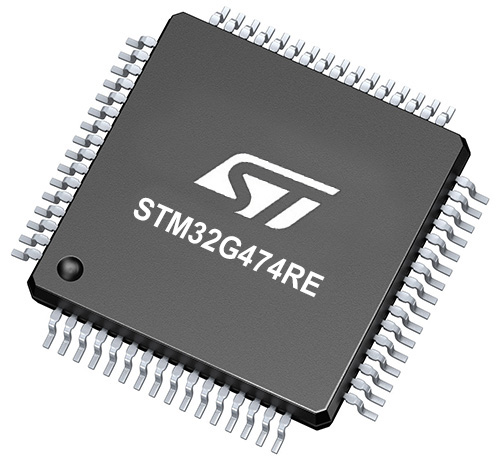
Architecture
ARM Cortex-M4
MCU Memory (KB)
512
Silicon Vendor
STMicroelectronics
Pin count
64
RAM (Bytes)
128k
You complete me!
Accessories
Click Shield for Nucleo-64 comes equipped with two proprietary mikroBUS™ sockets, allowing all the Click board™ devices to be interfaced with the STM32 Nucleo-64 board with no effort. This way, Mikroe allows its users to add any functionality from our ever-growing range of Click boards™, such as WiFi, GSM, GPS, Bluetooth, ZigBee, environmental sensors, LEDs, speech recognition, motor control, movement sensors, and many more. More than 1537 Click boards™, which can be stacked and integrated, are at your disposal. The STM32 Nucleo-64 boards are based on the microcontrollers in 64-pin packages, a 32-bit MCU with an ARM Cortex M4 processor operating at 84MHz, 512Kb Flash, and 96KB SRAM, divided into two regions where the top section represents the ST-Link/V2 debugger and programmer while the bottom section of the board is an actual development board. These boards are controlled and powered conveniently through a USB connection to program and efficiently debug the Nucleo-64 board out of the box, with an additional USB cable connected to the USB mini port on the board. Most of the STM32 microcontroller pins are brought to the IO pins on the left and right edge of the board, which are then connected to two existing mikroBUS™ sockets. This Click Shield also has several switches that perform functions such as selecting the logic levels of analog signals on mikroBUS™ sockets and selecting logic voltage levels of the mikroBUS™ sockets themselves. Besides, the user is offered the possibility of using any Click board™ with the help of existing bidirectional level-shifting voltage translators, regardless of whether the Click board™ operates at a 3.3V or 5V logic voltage level. Once you connect the STM32 Nucleo-64 board with our Click Shield for Nucleo-64, you can access hundreds of Click boards™, working with 3.3V or 5V logic voltage levels.
Used MCU Pins
mikroBUS™ mapper
Take a closer look
Click board™ Schematic

Step by step
Project assembly
Software Support
Library Description
This library contains API for LightRanger 4 Click driver.
Key functions:
lightranger4_new_data_ready- Function that checks whether the new data is ready for readinglightranger4_get_distance- Function reads distance of the object in front of the sensorlightranger4_power_on- Function for starts power ON procedure
Open Source
Code example
The complete application code and a ready-to-use project are available through the NECTO Studio Package Manager for direct installation in the NECTO Studio. The application code can also be found on the MIKROE GitHub account.
/*!
* \file
* \brief LightRanger4 Click example
*
* # Description
* Demo application is used to shows basic controls LightRanger 4 Click
*
* The demo application is composed of two sections :
*
* ## Application Init
* Configuring Clicks and log objects.
* Settings the Click in the default configuration,
* adjusts the LONG mode (distance measurement up to 4 meters),
* sets the time budget and start measurement with the adjustment of inter measurements period.
*
* ## Application Task
* Reads the distance of the object in front of the sensor and logs
* distance to USBUART every 500 ms.
*
* \author Katarina Perendic
*
*/
// ------------------------------------------------------------------- INCLUDES
#include "board.h"
#include "log.h"
#include "lightranger4.h"
// ------------------------------------------------------------------ VARIABLES
static lightranger4_t lightranger4;
static log_t logger;
// ------------------------------------------------------ APPLICATION FUNCTIONS
void application_init ( void )
{
log_cfg_t log_cfg;
lightranger4_cfg_t cfg;
/**
* Logger initialization.
* Default baud rate: 115200
* Default log level: LOG_LEVEL_DEBUG
* @note If USB_UART_RX and USB_UART_TX
* are defined as HAL_PIN_NC, you will
* need to define them manually for log to work.
* See @b LOG_MAP_USB_UART macro definition for detailed explanation.
*/
LOG_MAP_USB_UART( log_cfg );
log_init( &logger, &log_cfg );
log_info( &logger, "---- Application Init ----" );
// Click initialization.
lightranger4_cfg_setup( &cfg );
LIGHTRANGER4_MAP_MIKROBUS( cfg, MIKROBUS_1 );
lightranger4_init( &lightranger4, &cfg );
lightranger4_power_on( &lightranger4 );
log_info( &logger, "--- Wait until the configuration of the chip is completed ---" );
lightranger4_default_cfg( &lightranger4 );
lightranger4_set_distance_mode( &lightranger4, LR4_DISTANCE_MODE_LONG );
lightranger4_set_measurement_timing_budget( &lightranger4, 1000 );
lightranger4_start_measurement( &lightranger4, 20 );
log_info( &logger, "--- Sensor start measurement ---" );
Delay_100ms( );
}
void application_task ( void )
{
uint16_t distance;
uint8_t m_status;
// Task implementation.
while ( lightranger4_new_data_ready( &lightranger4 ) != 0 )
{
Delay_1ms();
}
distance = lightranger4_get_distance( &lightranger4 );
log_printf( &logger, "** Distance: %d mm \r\n", distance );
m_status = lightranger4_get_range_status( &lightranger4 );
switch ( m_status )
{
case LR4_MRESP_SIGNAL_FAIL:
{
log_info( &logger, "Signal fail." );
break;
}
case LR4_MRESP_PHASE_OUT_OF_VALID_LIMITS:
{
log_info( &logger, "Phase out of valid limits" );
break;
}
case LR4_MRESP_SIGMA_FAIL:
{
log_info( &logger, "Sigma Fail. " );
break;
}
case LR4_MRESP_WRAP_TARGET_FAIL:
{
log_info( &logger, "Wrap target fail." );
break;
}
case LR4_MRESP_MINIMUM_DETECTION_THRESHOLD:
{
log_info( &logger, "Target is below minimum detection threshold. " );
break;
}
}
Delay_ms ( 500 );
}
int main ( void )
{
/* Do not remove this line or clock might not be set correctly. */
#ifdef PREINIT_SUPPORTED
preinit();
#endif
application_init( );
for ( ; ; )
{
application_task( );
}
return 0;
}
// ------------------------------------------------------------------------ END
Additional Support
Resources
Category:Optical
